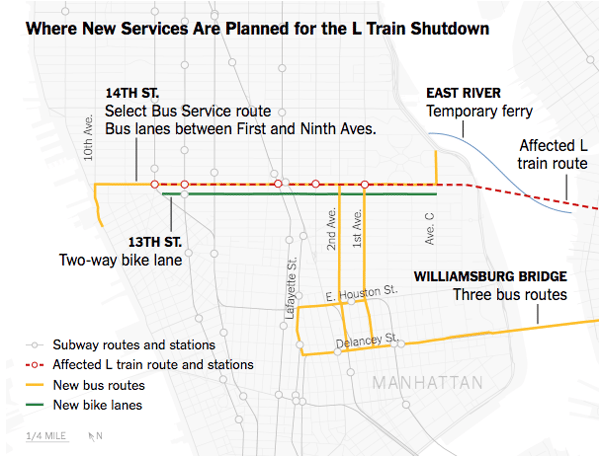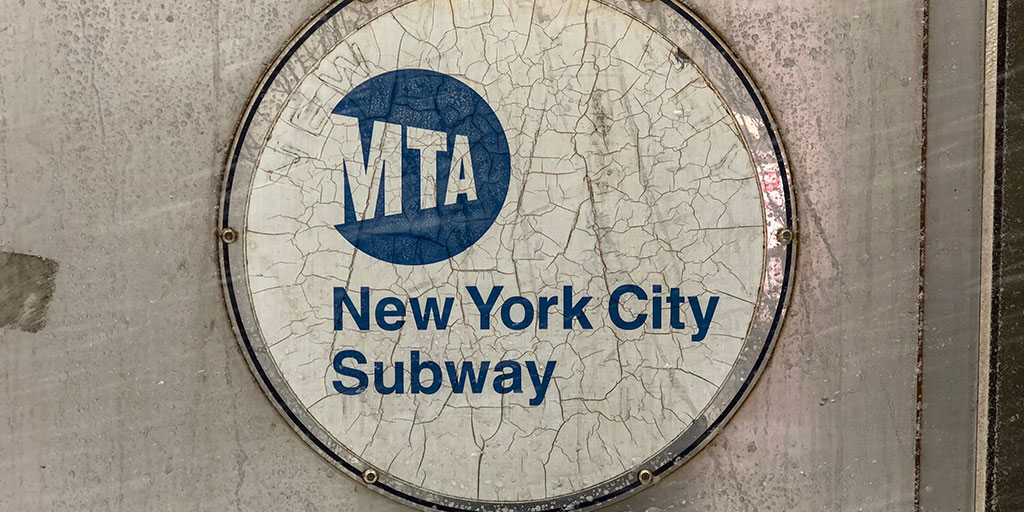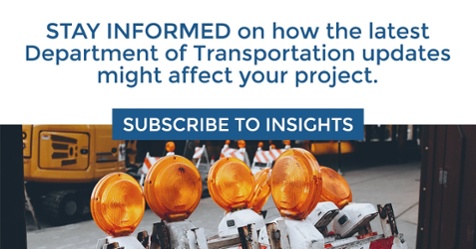Beginning in April 2019, the New York City L train will be shut down between Brooklyn and Manhattan for overdue repairs. The track work will force 400,000 daily commuters to find alternative transportation.
The city and MTA are working to draw awareness to this issue so commuters, who rely on the L Train daily, can begin finding new routes to get to and from work. Many New Yorkers and Brooklynites received a preview of what it will be like when the L Train is shut down when the MTA implemented the first of fifteen weekend shutdowns in early August. The weekend previews will resume on the weekend of October 5th and will happen for entirety of October, February, and three weekends in March.
Education and preparedness will benefit everyone in this situation.
Here’s a look at what to know about the L Train shutdown:
Why is this happening?
When Hurricane Sandy ravaged much of the Eastern seaboard in 2012, the Canarsie Tunnel, which carries the L Train under the East River between Brooklyn and Manhattan, was severely damaged. According to the MTA website, Hurricane Sandy damaged the tunnel’s tracks, signals, switches, power cables, signal cables, communication cables, lighting, cable ducts, and bench walls throughout a 7,100 foot long section.
The MTA’s L Train construction plans include demolition and reconstruction of approximately:
- 60,000 linear feet of duct banks
- 14,400 linear feet of track and track bed
- 270,000 linear feet of cable ducts and associated cables
- 7,000 linear feet of concrete lining
Additionally, reconstruction will include the installation of tunnel lighting and fire systems, as well as installing safety measures and reinforcements to protect the tunnel from future storms.
How does this impact me?
Even if you are not a regular L Train commuter, odds are you will be impacted by the commuter traffic overflow and temporary public transit measures that will be put in place. L Train regulars (again for those needing to commute from the Bedford Ave. station in Brooklyn and 14th Street/8th Ave. in Manhattan) will have to accommodate the shutdown by adopting alternative routes. This could lead to overcrowding on other lines, such as the 7 Train out of Queens.
Unfortunately, the alternative subway routes will not be enough to accommodate nearly a half-million commuters. Streets will be busier as well, for example 14th Street in Lower Manhattan will become the busiest street in the country, ferrying 84,000 people per day!
For business owners along the L Train line, visit the L Train Coalition to learn more about the dialogue happening around this issue and how to work together and with council members during this time ahead.
What is the city doing to alleviate the issue?
Quoted in the New York Times, Polly Trottenberg, NYC’s transportation commissioner said:
“You can’t shut a tunnel down that was carrying hundreds of thousands of people every day, and have it be impact free. I wish that you could. One thing we know is that New Yorkers, they can be pretty tough and resilient and make the best of things. I hope they will do everything they can in this case.”
Education will be key when it comes to preparing the public for this massive construction project. According to the Thrillest New York, here’s what we know is currently planned and approved for alternative transit:
- Board the Subway at the J/M/Z station and cross the river via the Williamsburg Bridge. The city will increase service on these lines.
- Take the G Line into Queens, transfer to the 7 at Court Square station, and depart in Midtown
- The NYC Ferry will continue running along its standard route from Greenpoint Terminal in Greenpoint to S10th and N5th Streets in Williamsburg, and onward to Wall Street/Pier 11. The ferry ride will cost the same as a single ride subway fare.
- The DOT and MTA will launch the Select Bus Service (SBS) in January 2019, three months in advance of the shutdown, to accommodate the new commuter routes. The SBS will be able to assist 84,000 daily riders, decrease commute times, and is set to arrive every two minutes during peak rush-hours. See image below for route details.
A non-city funded service that has developed as a result of the impending shutdown is The New L, a concierge service that provides a carpool subscription for a fee of $155 per month. The service sends a Mercedes-Benz Sprinter van to your door during the week, offers Wi-Fi and complimentary breakfast. Those who use the service will also share their ride with 11 other commuters.

Illustration by: Sara Almukhtar | Sources: The New York Times; Metropolitan Transportation Authority; Baruch College.
As the city prepares for this shutdown, please exercise patience and allow for extra time when using public transit in the areas mentioned above. While the situation is not ideal, the reconstruction will benefit everyone in the long haul and a temporary shutdown to ensure safety and avoid passenger fatalities is always in the best interests of New Yorkers.
For more details and updates on this issue, visit The Thrillest New York for a series of blog articles ranging in depth from how the L Train shutdown impacts local real estate, the community infrastructure, and more.
Learn more about New York City updates by subscribing to Milrose Insights.








